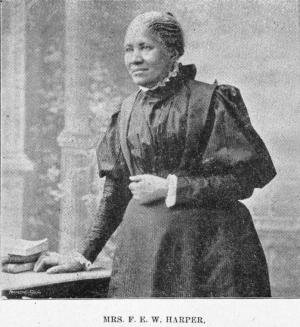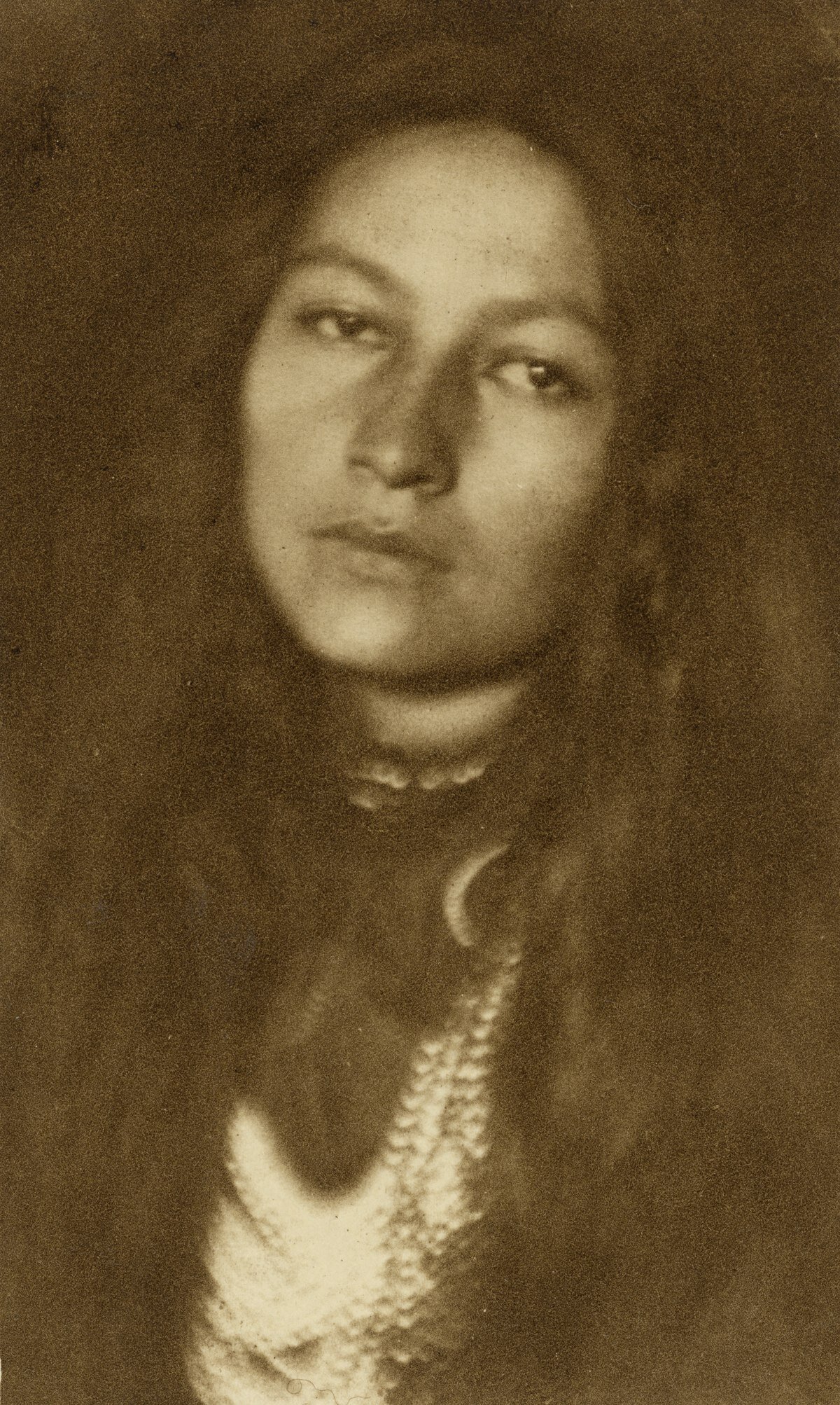Women suffragists at the head of the parade, marching down Pennsylvania Avenue, with the U.S. Capitol in background, on March 3, 1913. Courtesy of the Library of Congress.
BY: JACQUELINE QIU, WINTER 2021 COLLABORATOR AT POWER IN PLACE
On March 3, 1913, the Women’s Suffrage Procession manifested a new energy for the suffrage movement, paving the way for the landmark 19th amendment to be passed in Congress. A substantial procession of 8,000 marchers, 9 bands, 4 mounted brigades, and 20 floats gathered on Pennsylvania Avenue to march to the Treasury Building for an allegorical performance demanding necessity of female enfranchisement. Organized by the National American Woman Suffrage Association (NAWSA), this gathering of women demanding socio-political equality occurred on a strategic day in order to denounce the lack of female representation in the political sphere. These women marched on the same route that the new President, Woodrow Wilson, would undertake the very next day, March 4, en route to his presidential inauguration. The 1913 women’s suffrage procession was expertly planned in order to fall on this exact date, in the presence of lawmakers in Washington, D.C. The chairs of the NAWSA, Alice Paul and Lucy Burns, wished to send a provocative message that indicated a new chapter of resistance to gender-based disenfranchisement.
Cover of program for the National American Woman Suffrage Association procession, showing woman, in elaborate attire, with cape, blowing long horn, from which is draped a "votes for women" banner, on decorated horse, with U.S. Capitol in background. Courtesy of the Library of Congress.
““The right of citizens of the United States to vote shall not be denied or abridged by the United States or by any State on account of sex.” ”
A diverse group of women gathered in order to justly demand the passage of the Susan B. Anthony Amendment in Congress. Proposed in 1878, this amendment prohibited the denial of enfranchisement, based on gender, and thus exemplified the core philosophy of the women’s suffrage movement. However, this amendment had been stalled for the last 35 years; this reality would not be tolerated anymore by the dedicated suffragists. With elaborate floats, decor, and songs, this procession possessed the intent to make that bold statement in a concrete way. In fact, the procession was designed to present an argument for the validity of female enfranchisement; each section highlighted the distinct accomplishments of the respective participants. There were delegations from states, specific professions (like business or law), and universities.
Inez Milholland rides Grey Dawn as the herald of the Woman Suffrage Procession, March 3, 1913
Harris & Ewing, photographer. Records of the National Woman's Party, Library of Congress
The first sight of the procession was Inez Milholland, dressed in white on top of a white horse named Grey Dawn, represented the ideal of female suffrage. As a prominent lawyer and activist, she represented the New Woman, whose voice would no longer be suppressed by patriarchal, electoral institutions. As the New Women of the 20th century, this generation of women rebelled against the establishment of societal expectations and challenged gender norms in various ways. From dress to behavior, a new wave of change was being realized during the 1913 Women’s Suffrage Procession. This next generation of women pursued female equality, not only in the political and legal sphere, but in all areas of existence. Feminism was on display, as each woman had a specific individual cause that they stood for, in addition to standing together in a collective mission for female enfranchisement while marching down the National Mall.
“We demand an amendment to the Constitution of the United States enfranchising the women of this country.”
The "Great Demand" float in the Woman Suffrage Procession, March 3, 1913
Schlesinger Library, Radcliffe Institute, Harvard University
The first float, which held the message of the “Great Demand,” represented the newfound commitment and energy that was needed by the suffrage movement to actively achieve their goal. Suffragettes were no longer content with accepting limited voting rights in bits or in one state/jurisdiction; a nationwide enfranchisement was necessary.
March 3, 1913 photo at the Suffrage Parade, showing marchers (left to right) Mrs. Russell McLennan, Mrs. Althea Taft, Mrs. Lew Bridges, Mrs. Richard Coke Burleson, Alberta Hill and Miss F. Ragsdale. Courtesy of the Library of Congress.
Marie Louise Bottineau-Baldwin.
Suffragettes of color were a prominent feature in the 1913 Women’s Suffrage Procession. More than 40 black women, with their specific state delegations, marched together for a future of political enfranchisement and equality. Leading banners from their sections, they encapsulated a conjoint end of racial justice with achieving the right to vote for women. There were even 25 black students from the Delta Sigma Theta sorority at Howard University, with as many as 6 graduates. Those women, with their respected academic regalia, included prominent suffragists such as Mary Church Terrell. Additionally, Marie Louise Bottineau-Baldwin, a famous Native American lawyer who advocated for the rights of her people with the Society of American Indians, marched in the procession. Her presence highlighted the relevant role of suffragists of color to re-energizing the women’s suffrage movement. White female suffragists did not only function as important contributors; women of color actively contributed to the health and vitality of this collective cause of suffrage.
Ida B. Wells-Burnett
However, the participation and advocacy of suffragists of color did not function without complications. For example, Ida B.Wells-Burnett, a prominent African American suffrage activist, was denied the opportunity to march at the front of the Illinois delegation like she had originally intended. It is important to remember that she, as a black woman, still faced more barriers to her activism than her white counterparts, who as organizers of this procession relegated her to march at the back of the Illinois delegation. However, Wells-Burnett refused to let the color of her skin dictate the depth of her role in advocating for women's suffrage; eventually, she found a way to march at the front of her delegation. The efforts of Ida B. Wells-Burnett serve as a reminder that racial justice is a conjoint end with women’s suffrage, occupying the same status of importance.
Part of the 1913 Suffrage Parade. The signs read "In The Home,” and "Homemakers.” Courtesy of the Library of Congress.
The women’s suffrage procession seemed to have all the components to be successful, but faced unprecedented obstacles. A crowd of 250,000 people, mainly men who arrived in the nation’s capital for the presidential inauguration, formed a physical barrier against the marching procession of women. These spectators blocked the parade route, accosting the women in the street and stopping their forward movement. A physical confrontation resulted within the parade, as the crowd sought to advance their own agenda at the expense of this tightly organized procession of women. Even though the participants on horseback sought to block these individuals, the sheer number of spectators disrupted the women’s march to their destination, the Treasury building. In fact, a sea of hostile, jeering men shouted rude, explicit insults at the women. Harassment, cat-calling, and sexual propositions flew in the face of each woman in the parade as they persisted onward.
The crowd converges on marchers, blocking the parade route during March 3, 1913, suffrage procession, in Washington, District of Columbia. Courtesy of Library of Congress.
Yet, the bravery of these women was evident, as many continued on in the face of the vile opposition of the surrounding crowd. Even with tears, and psychological hurt, they persisted without interruption or hesitation. Some even carried banner poles, flags, and hat pins to ward off the attack. Physical unrest was a challenge that would be overcome together, with a collective effort. It was in fact necessary to assert their independent voices, and defend their bodies, when the Capitol Police was unable, or unwilling, to intervene. It was only until U.S. army troops entered the crowd that the spectators disappeared from harassing these women. En route to demanding their right to vote, it is telling that these female participants also had to, in an autonomous manner, affirm their own safety against an opposition that was threatened by their willingness to break traditional patriarchal norms. For these women, giving up was not an option, as there was too much at stake in their quest for socio-political equality.
The crowd surrounds and slows a Red Cross ambulance during the Women's suffrage procession, on March 3, 1913. Dozens of marchers were injured during the march, shoved and tripped by spectators. Courtesy of the Library of Congress.
The women’s suffrage procession on March 3, 1913, made notable headlines in newspapers around the country. The disruptive unrest of the crowd yielded 100 participants that were eventually hospitalized as a consequence of their involvement in the parade. Therefore, as the public deemed it unfathomable that the police did nothing to stop the blatant disruption of the ongoing procession, scandal ensued. An investigation of the ineffectiveness of the Capitol police commenced in the following days, resulting in the firing of the Washington, D.C. superintendent of police. It is clear that the police did not value this procession, which was threatened by disruptive crowds, as a cause worth protecting.The women of the NAWSA took a stand for themselves, in the face of substantial resistance to their efforts, and did not back down.
Tableau presented by the Women's Suffrage Association, on the U.S. Treasury building steps, on March 3, 1913. Courtesy of Library of Congress.
The women’s suffrage procession garnered more attention than the events of the next day, the presidential inauguration. On the same steps of the suffragists occupied, President Wilson was seemingly an afterthought in the shadow of the previous events. The suffragettes, who even suffered injuries to march against the physical barrier of the spectators, took center stage. The procession of these bold suffragettes renewed energy and public attention to their cause of pursuing and realizing the passage of the Susan B. Anthony Amendment and the “Great Demand.” The suffrage movement needed this jolt of energy in order to affirm greater vitality and vigor in its character. This reinvigoration of the suffrage movement thus created powerful momentum, as in the next 7 years, the right to vote for women would be concretely realized in the political and legal sphere. The 19th amendment benefited from the events of March 3, 1913; a newfound spirit that fought for gender egalitarianism in enfranchisement manifested in the actions of these brave women. The women marching in the 1913 procession unequivocally valued a future where the next generations of women would experience socio-political equality.
References:
Taylor, Alan. “The 1913 Women’s Suffrage Parade.” The Atlantic. March 1, 2013. https://www.theatlantic.com/photo/2013/03/100-years-ago-the-1913-womens-suffrage-parade/100465/
“1913 Woman Suffrage Procession.” U.S. National Park Service. 2020. https://www.nps.gov/articles/woman-suffrage-procession1913.htm
Jacqueline Qiu is a junior at Middlebury College, double majoring in French and Political Science. She is passionate about humanitarianism, women in politics, mental health awareness and advocacy, and French language and literature. On campus, she is the Co-President of the French club and Active Minds Middlebury









































